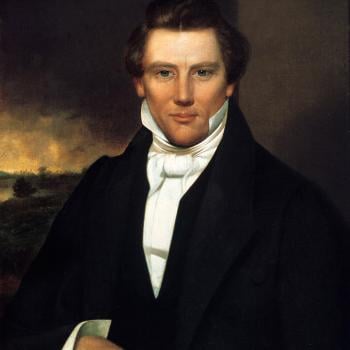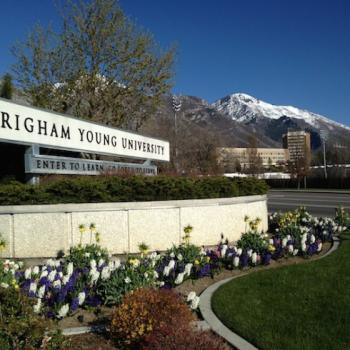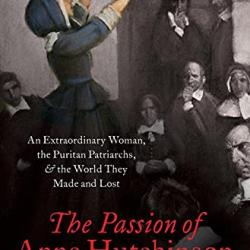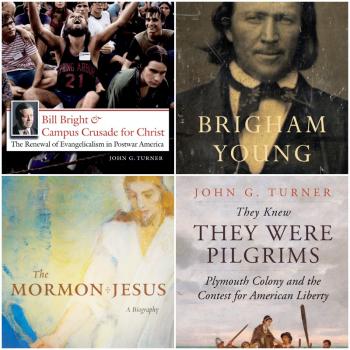The Church of Jesus Christ of Latter-day Saints holds semiannual general conferences, with twenty thousand of the faithful gathering in the church’s conference center across the street from Temple Square and others watching in local meeting houses, stake centers, and over the internet.
General Conference always receives some coverage in the media. This year, the New York Times noted Apostle Dallin Oaks’s call for civility and graciousness amid ongoing opposition to the legalization and acceptance of gay marriage. Also, Ordain Women did not protest outside of the church’s Salt Lake City Conference Center but instead sought and gained admission to regional stake centers. Finally, for the first time in the church’s history (at least to my knowledge), several church leaders delivered their addresses in languages other than English.
I went to a local ward to watch the Saturday evening session, organized for the church’s priesthood holders. I’ve watched scattered bits of LDS conferences on the internet. I found it a different experience to watch with church members for whom the speakers are “living prophets.” A few thoughts and questions:
– I would love to hear President Dieter Uchtdorf speak in German. Could he possibly sound as tender and kind in his native tongue? I couldn’t even find a Youtube clip of him speaking German. Nächstes Mal auf Deutsch, bitte, Präsident Uchtdorf!
– If the Presbyterian Church in the U.S.A. organized a General Conference (as opposed to a General Assembly), would anyone watch ten hours of discourses by church leaders?
– The fact that I, as a non-member am entirely welcome at priesthood meetings, and female members are not, makes no sense to me.
– Some Latter-day Saints consider “Ye Elders of Israel” to be a rather trite selection for priesthood meetings. (The church’s hymnal, by the way, specifies that it is a song for men). I found the rendition by the Missionary Training Center choir beautiful:
– By contrast, it’s a bit awkward to stand silently while one’s companions sing: “While they who reject this glad message / Shall never such happiness know.” That’s from the LDS standard “We Thank Thee God for a Prophet.” Indeed, I perceived more markers of LDS distinctiveness in the priesthood session than I have from visiting LDS church services on occasion. For example, the repeated emphasis on President Thomas Monson’s testimony, compassion, and leadership is necessarily a bit off-putting to a Protestant.
– The LDS Church’s highest-ranking leaders are elderly men. There’s no suspense when the current president / prophet dies, as the most senior member of the Quorum of the Twelve Apostles succeeds him and forms a new First Presidency. Seven of the current apostles are upwards of eighty. There are obvious disadvantages to having leaders of advanced age, namely declining capacities. Perhaps someday a church president will imitate Pope Benedict XVI and retire. But at the same time, I admire the fact that the church generally does a better-than-average job at obtaining participation and contributions from members of all ages. Newly ordained holders of the Aaronic priesthood serve the sacrament during Sunday meetings. Young adult women and men serve missions. Very old men hold the “keys of the priesthood.” Most non-senior adults are relatively uninterested in the counsel of an eighty-seven-year-old man. Many of these run counter to common sense, but they also have positive effects. Although the church does emeritize its non-apostolic general authorities at the age of seventy, the Mormon example is a good reminder that you don’t need to put people out to pasture too soon.












